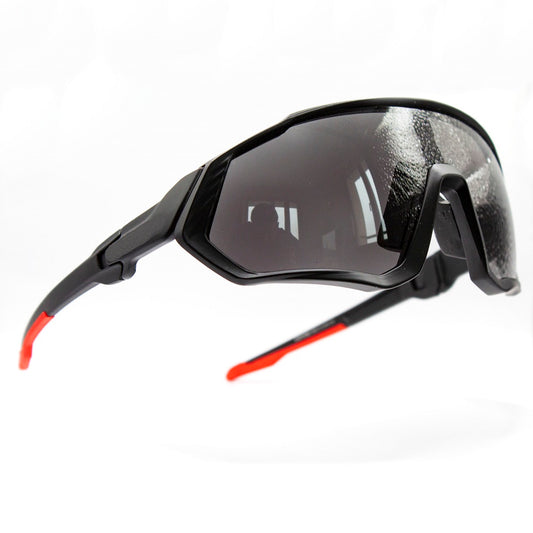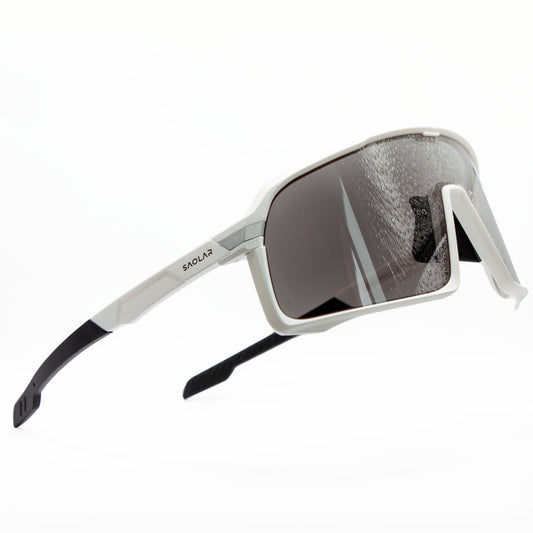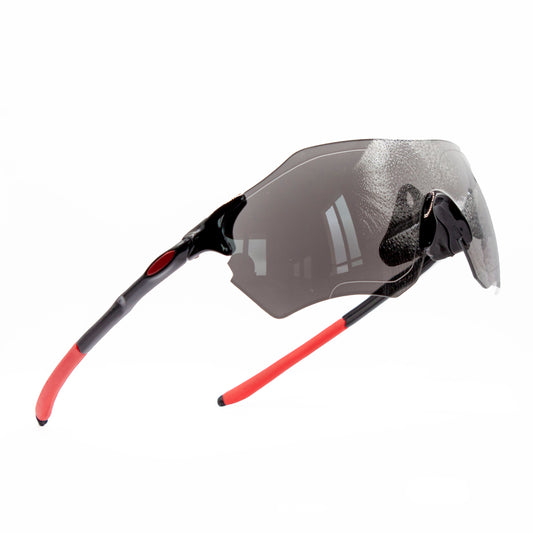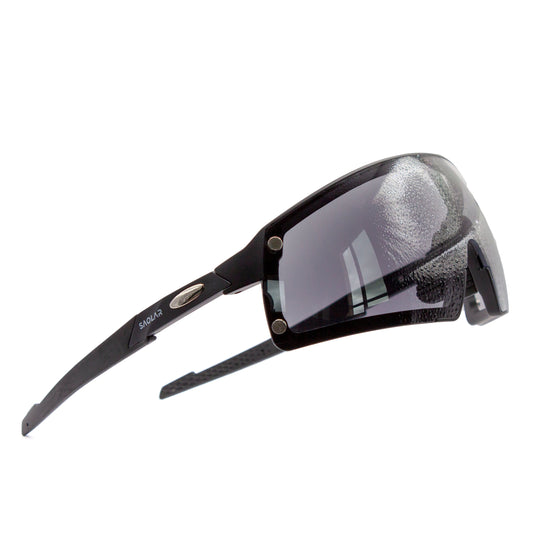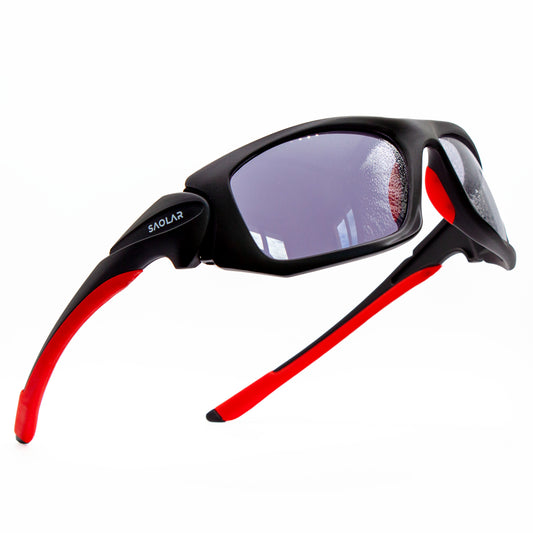Cycling Calorie Calculator
Understanding calorie burn while cycling is crucial for anyone looking to optimize their cycling experience, whether it's for weight loss, weight gain, or performance improvement. By knowing how many calories you burn during your rides, you can make informed decisions about your nutrition, exercise routines, and overall health strategies.
Cycling is an excellent way to stay fit and healthy. It's a low-impact exercise that can be adapted to any fitness level, making it accessible to a wide range of people. However, to make the most out of your cycling sessions, it's essential to understand the energy requirements involved.
Why Calorie Tracking is Important
Keeping track of calorie intake and output is especially popular among those seeking to lose weight through biking. Knowing the energy requirements for cycling different distances at various speeds can help achieve goal calorie deficits, which is key for weight loss. It also helps prevent overcompensating or undercompensating for exercise, ensuring a balanced approach to nutrition and diet.
For those aiming to lose weight, aiming for small calorie deficits is crucial to avoid a drop in performance or adverse health effects. It's important to note that rapid weight loss can lead to a decrease in muscle mass, which is undesirable for overall health and fitness.
Enhancing Performance and Recovery
For cyclists focused on performance improvement, understanding calorie burn is equally important. Proper refueling during and after biking sessions can optimize both performance and recovery time. Cyclists often spend extended periods on the bike, making it essential to plan calorie intake meticulously to maintain energy levels throughout their rides.
Pre-fueling strategies are also vital. The amount of pre-fuel required depends on the duration and intensity of the session. For rides up to a couple of hours at moderate speeds, no significant energy loading is necessary. However, for longer and more intense rides, increasing food and calorie intake the day before and on the day of training becomes much more important.
Achieving Weight Gain Goals
If your goal is to gain weight while cycling, ensuring you are well-fueled is crucial. Longer bike rides can result in significant calorie burn, making it necessary to plan ahead and accurately calculate calories burned. This helps in compensating appropriately before, during, and after biking sessions to achieve weight gain goals without compromising on performance or health.
In summary, understanding how to calculate and track calories burned while cycling is a valuable tool for anyone looking to improve their fitness, achieve specific weight goals, or enhance their cycling performance. By incorporating these insights into your routine, you can ensure a balanced and effective approach to your cycling endeavors.
Why Calculating Calories Burned While Cycling is Important
Understanding the calories burned while cycling is essential for several reasons. Knowing your calorie expenditure can help you achieve and maintain your fitness goals, optimize your performance, and ensure proper nutrition. Whether you're aiming for weight loss, weight gain, or improving your cycling performance, keeping track of your calorie burn provides numerous benefits.
Achieving Weight Loss Goals
One of the primary reasons cyclists track calorie expenditure is to achieve weight loss. By knowing how many calories you burn during a ride, you can create a precise calorie deficit, which is crucial for losing weight effectively and sustainably. Small, consistent deficits help avoid a drop in performance and adverse health effects. Fast weight loss can lead to an undesirable loss of muscle mass, so understanding your energy requirements helps you balance your diet and maintain muscle.
For more tips on balancing exercise and diet, check out our article on 4 Simple Habits That Boosted My Technical Climbing.
Enhancing Performance and Recovery
For those focused on performance improvement, knowing your calorie burn is vital. Proper refueling during and after cycling sessions can optimize performance and recovery. Cyclists often spend long hours on their bikes, making it necessary to plan calorie intake meticulously. Understanding calorie expenditure helps you ensure that you have enough energy to sustain your ride and recover efficiently afterward.
Additionally, pre-fueling is essential for longer and more intense rides. By calculating your calorie needs, you can adjust your food intake the day before and on the day of your training, ensuring you have sufficient energy for peak performance.
Supporting Weight Gain Goals
If your goal is to gain weight while cycling, accurate calorie tracking is crucial. Longer bike rides can lead to significant calorie burn, so it's essential to plan your nutrition to compensate appropriately before, during, and after rides. This ensures that you can gain weight without compromising your performance or overall health.
Maintaining a Balanced Diet
Whether you're trying to lose, gain, or maintain weight, knowing your calorie expenditure helps you adjust your diet to match your activity level. This balance is key to staying healthy and performing well in your cycling endeavors. It prevents you from overcompensating with too much food or undercompensating, which can lead to fatigue and decreased performance.
Optimizing Health and Fitness
Tracking calories burned while cycling not only helps with weight management and performance but also supports overall health and fitness. By understanding your energy requirements, you can make informed decisions about your nutrition, ensuring that your body gets the fuel it needs for optimal functioning. This holistic approach to fitness contributes to better long-term health outcomes.
In conclusion, calculating the calories burned while cycling is a valuable practice for anyone looking to enhance their fitness journey. Whether your goal is weight loss, weight gain, or performance improvement, understanding your calorie expenditure helps you make informed decisions about your diet and exercise routine, leading to better health and fitness outcomes.
Factors Affecting Calorie Burn While Cycling
Understanding the factors that influence calorie burn while cycling is crucial for accurately calculating your energy expenditure and optimizing your fitness routine. Several variables, including weight, speed, duration, and intensity, play significant roles in determining how many calories you burn during a cycling session.
Weight
Your weight is one of the most significant factors affecting calorie burn. Heavier individuals expend more energy to move their body weight, resulting in higher calorie burn rates. Conversely, lighter individuals burn fewer calories for the same activity. This is why personalized calculations are essential for accurate results.
Speed
The speed at which you cycle greatly impacts the number of calories burned. Higher speeds increase the intensity of the workout, leading to greater energy expenditure. For example, cycling at 15 mph (24 kph) requires approximately 10 times more energy than sitting still, making it equivalent to 10 METs. As speed increases, the MET value also rises, leading to higher calorie burn.
Duration
The duration of your cycling session directly affects the total calories burned. Longer rides result in more extended periods of energy expenditure, thus increasing the overall calorie burn. It’s important to balance duration with intensity to avoid overexertion while maximizing calorie burn.
Intensity
Intensity refers to how hard you are working during your cycling session. High-intensity cycling, such as uphill riding or sprinting, burns more calories compared to low-intensity, steady-state cycling. Intensity can be measured in terms of METs, which quantify the energy cost of physical activities. By increasing the intensity, you can significantly boost your calorie burn.
For more insights on how to fuel your rides and adjust your nutrition based on these factors, check out our article on Mountain Biking Nutrition: Essential Fueling Tips.
Terrain and Conditions
The type of terrain and riding conditions also influence calorie burn. Cycling on hilly or uneven terrain requires more effort and energy, leading to higher calorie expenditure. Wind resistance, weather conditions, and road surface can also impact the intensity of your ride and the number of calories burned.
Cycling Efficiency
Your cycling efficiency, which includes your bike’s condition and your riding technique, can affect calorie burn. A well-maintained bike and proper cycling form can make your rides more efficient, potentially reducing the energy required for the same distance. However, focusing on technique and efficiency improvements can help you ride longer and more intensely, ultimately burning more calories.
Age and Gender
Age and gender can also influence calorie burn. Generally, younger individuals have higher metabolic rates and may burn more calories. Men typically have more muscle mass than women, which can lead to higher calorie expenditure during physical activities like cycling.
By understanding and considering these factors—weight, speed, duration, intensity, terrain, cycling efficiency, age, and gender—you can more accurately calculate the calories burned while cycling. This knowledge allows you to tailor your cycling workouts to your specific goals, whether it's for weight loss, weight gain, or performance improvement.
For more information on optimizing your cycling nutrition and performance, visit our article on Mountain Biking Nutrition: Essential Fueling Tips.
Understanding MET (Metabolic Equivalent of Task)
Definition of MET
The Metabolic Equivalent of Task (MET) is a unit used to estimate the amount of energy expended during physical activities, relative to resting metabolic rate. One MET is defined as the energy cost of sitting quietly, which is approximately 1 kcal/kg/hour. It provides a simple, standardized way to compare the energy expenditure of various activities.
Relevance to Calorie Calculation
MET values are essential for accurately calculating calories burned while cycling. By understanding the MET value of your cycling activity, you can estimate the total calories burned based on your weight and the duration of your ride. The formula to calculate calorie expenditure using MET is:
Calories burned (kcal)=MET×Weight (kg)×Duration (hours)
This formula highlights how METs, combined with individual factors like weight and duration, provide a comprehensive understanding of energy expenditure.
Examples of MET Values for Different Cycling Speeds
The Compendium of Physical Activities Reference List provides MET values for various activities, including cycling at different speeds. Here are some examples of MET values for cycling:
- Leisurely Cycling (<10 mph / <16 km/h):
- MET Value: 4.0
- Example: Casual biking on flat terrain
- Moderate Cycling (10-12 mph / 16-19 km/h):
- MET Value: 6.8
- Example: Commuting or recreational biking at a moderate pace
- Vigorous Cycling (12-14 mph / 19-23 km/h):
- MET Value: 8.0
- Example: Intense cycling for exercise or training purposes
- Very Vigorous Cycling (14-16 mph / 23-26 km/h):
- MET Value: 10.0
- Example: Racing or high-intensity training
- Extremely Vigorous Cycling (>16 mph / >26 km/h):
- MET Value: 12.0-15.8
- Example: Competitive racing or extremely intense cycling sessions
- Mountain Biking (Varied Terrain):
- MET Value: 8.5
- Example: Mountain biking on rugged terrain with significant elevation changes
Practical Application
To see how MET values translate into calorie calculations, let's consider an example. Suppose a person weighs 70 kg and cycles at a moderate pace of 12 mph (19 km/h) for 1.5 hours. The MET value for this activity is 6.8.
Using the formula:
Calories burned=6.8×70×1.5=714 kcal
This calculation shows that the cyclist burns approximately 714 calories during this session.
Conclusion
Understanding MET values and their application in calculating calories burned while cycling is crucial for tailoring your cycling workouts to meet your fitness goals. Whether you are cycling leisurely or engaging in high-intensity training, knowing the MET value helps you estimate your energy expenditure accurately.
For more insights on how to fuel your cycling activities effectively, check out our article on Mountain Biking Nutrition: Essential Fueling Tips.
How to Calculate Calories Burned: Step-by-Step Guide
Calculating the calories burned while cycling involves a systematic approach to ensure accuracy. This step-by-step guide will help you understand the process and apply it to your cycling routines.
Step 1: Determine Your Weight
Explanation and Importance
The first step in calculating calories burned while cycling is to know your weight. Your weight plays a crucial role in determining how many calories you burn, as heavier individuals tend to burn more calories than lighter ones for the same activity. Accurate weight measurement ensures the precision of your calorie calculations.
Step 2: Measure Your Cycling Speed
How to Accurately Measure Speed
Next, you need to determine your cycling speed. Speed affects the intensity of your ride and, consequently, the calories burned. Here’s how you can measure your speed accurately:
- Bike Computer: Install a bike computer on your bicycle to track your speed in real-time.
- GPS Device: Use a GPS device or a smartphone app to monitor your speed and distance covered.
- Fitness Tracker: Wear a fitness tracker that includes a cycling mode to measure speed and other metrics.
Accurate speed measurement helps in selecting the appropriate MET value for your calculation.
Step 3: Calculate the Duration of Your Cycling Session
Importance of Precise Timing
The duration of your cycling session is another critical factor in calculating calorie burn. Use a reliable stopwatch or timer to track the exact time spent cycling. Accurate timing ensures that you do not overestimate or underestimate your calorie expenditure.
Step 4: Use the MET Formula
Detailed Explanation of the Formula
The formula to calculate calories burned is:
Calories burned (kcal)=MET×Weight (kg)×Duration (hours)
Practical Example with Sample Calculation
Let’s go through a practical example to illustrate how to use this formula. Suppose you weigh 70 kg and cycle at a moderate pace of 12 mph (19 km/h) for 1.5 hours. The MET value for this activity is 6.8.
- Determine MET Value: From the MET values table, moderate cycling (12 mph) has a MET of 6.8.
- Apply the Formula: Calories burned=6.8×70×1.5=714 kcal
In this example, the cyclist burns approximately 714 calories during the 1.5-hour session.
By following these steps, you can accurately calculate the calories burned while cycling. Understanding and applying this method helps you tailor your workouts to your fitness goals, whether it's weight loss, weight gain, or performance improvement. Accurate calorie calculations also allow you to make informed decisions about your nutrition and exercise regimen.
For further reading on how to optimize your cycling nutrition and performance, visit our article on Mountain Biking Nutrition: Essential Fueling Tips.
Tools and Apps for Calculating Calories Burned
In today's digital age, numerous tools and apps can help you accurately calculate the calories burned while cycling. These resources provide convenient ways to track your cycling metrics and ensure precise calorie calculations, helping you stay on top of your fitness goals.
Overview of Popular Tools and Apps
1. Strava
Strava is one of the most popular apps for cyclists. It tracks your speed, distance, duration, and elevation gain, providing a comprehensive overview of your rides. Strava also estimates the calories burned based on your activity data and personal information such as weight and age.
Key Features:
- Real-time tracking and analysis
- Community features to connect with other cyclists
- Integration with various devices and wearables
2. MyFitnessPal
MyFitnessPal is a versatile app that tracks both your exercise and nutrition. It includes a database of exercises, including cycling, and estimates the calories burned based on your input. You can also log your meals to get a complete picture of your calorie intake and expenditure.
Key Features:
- Extensive food and exercise database
- Easy logging and tracking of activities
- Integration with other fitness apps and devices
3. Garmin Connect
For those using Garmin devices, Garmin Connect is an excellent tool for tracking cycling activities. It provides detailed metrics, including speed, distance, and heart rate, and calculates the calories burned during your rides. The app also offers insights into your overall fitness and performance.
Key Features:
- Detailed activity tracking and analysis
- Compatibility with Garmin devices
- Personalized fitness insights
4. Endomondo
Endomondo is a fitness app that supports a wide range of activities, including cycling. It uses GPS tracking to monitor your rides and calculate calories burned. Endomondo also offers training plans and challenges to keep you motivated.
Key Features:
- GPS tracking for accurate metrics
- Personalized training plans
- Social features to connect with friends
5. Apple Health
For iPhone users, Apple Health integrates data from various fitness apps and devices to provide a comprehensive overview of your health and fitness. It includes cycling as an activity and can estimate calories burned based on your input and data from connected devices.
Key Features:
- Centralized health and fitness data
- Integration with multiple apps and devices
- Personalized health insights
Using these tools and apps can significantly enhance your ability to track and calculate the calories burned while cycling. They provide accurate and detailed metrics, making it easier to achieve your fitness goals, whether it's weight loss, weight gain, or performance improvement.
For more insights into optimizing your cycling performance, you might find our article on Carbon Fiber Rims: Are They Worth the Investment? helpful.
Tips for Accurate Calorie Calculation
Accurately calculating the calories burned while cycling is crucial for achieving your fitness goals, whether it's weight loss, weight gain, or performance improvement. Here are some tips to ensure your calculations are precise and reliable.
Use Reliable Data
Reliable data is the foundation of accurate calorie calculations. Ensure that the information you input, such as your weight, cycling speed, and duration, is as accurate as possible.
1. Regularly Update Your Weight
Your weight can fluctuate, so it's important to update it regularly. Use a reliable scale and try to weigh yourself at the same time of day under similar conditions to get consistent measurements.
2. Use Accurate Devices for Speed Measurement
Accurate speed measurement is essential. Invest in a high-quality bike computer or GPS device to track your speed accurately. These devices provide real-time data that is crucial for precise calorie calculations.
Consistent Measurement Methods
Consistency in your measurement methods ensures that your data is comparable over time, leading to more reliable calorie burn estimates.
1. Track Duration Precisely
Use a stopwatch or a cycling app to track the duration of your rides precisely. Start and stop the timer accurately to ensure that the recorded time reflects your actual cycling activity.
2. Maintain a Regular Cycling Routine
To get consistent data, try to maintain a regular cycling routine. This helps in understanding patterns in your calorie burn and adjusting your nutrition and training plans accordingly.
Regular Monitoring
Regular monitoring allows you to track your progress and make necessary adjustments to your training and diet.
1. Keep a Cycling Log
Maintain a cycling log to record your rides, including distance, speed, duration, and estimated calories burned. This log helps in identifying trends and making informed decisions about your fitness regimen.
2. Use Fitness Apps for Tracking
Leverage fitness apps like Strava, MyFitnessPal, or Garmin Connect to monitor your cycling activities. These apps not only provide accurate tracking but also help in analyzing your performance over time.
Cross-Check with Multiple Sources
To ensure the accuracy of your calorie calculations, cross-check your data with multiple sources.
1. Compare Different Tools and Apps
Use different tools and apps to track your rides and compare the calorie burn estimates. This helps in identifying any discrepancies and choosing the most reliable tool.
2. Validate with Heart Rate Monitors
Using a heart rate monitor can provide additional data on your workout intensity, leading to more accurate calorie burn calculations. Heart rate data can be used alongside MET values to refine your estimates.
Consider External Factors
External factors such as weather, terrain, and bike condition can impact your calorie burn.
1. Adjust for Terrain and Weather
Cycling on different terrains or in varying weather conditions can affect your energy expenditure. Make necessary adjustments in your calorie calculations to account for these factors.
2. Maintain Your Bike
A well-maintained bike ensures efficient energy use. Regularly check and maintain your bike to ensure it is in optimal condition, which can help in achieving accurate calorie burn estimates.
Accurate calculation of calories burned while cycling involves using reliable data, consistent measurement methods, and regular monitoring. By following these tips, you can ensure that your calorie calculations are precise, helping you achieve your fitness goals more effectively.
For further insights into optimizing your cycling performance and making informed equipment choices, check out our article on Carbon Fiber Rims: Are They Worth the Investment?.
Benefits of Knowing Your Calorie Burn
Understanding the calories burned while cycling offers numerous advantages, from effective weight management to enhanced performance and overall fitness. By accurately tracking your calorie expenditure, you can tailor your nutrition and training plans to meet your specific goals.
Weight Management
Achieving Weight Loss Goals
Knowing your calorie burn helps create a precise calorie deficit, essential for weight loss. By matching your calorie intake with your expenditure, you can ensure a gradual and sustainable weight loss. This approach prevents the negative impacts of rapid weight loss, such as muscle loss and decreased performance.
Supporting Weight Gain
For those aiming to gain weight, understanding your calorie expenditure allows you to plan your calorie intake to exceed your burn rate. This is crucial for gaining weight healthily, ensuring you consume enough nutrients to support muscle growth and recovery without compromising performance.
Performance Enhancement
Optimizing Training Intensity
Knowing the calories burned during different cycling sessions helps you adjust your training intensity. You can tailor your workouts to improve endurance, speed, and overall performance by ensuring you are working at the right intensity levels to achieve your specific fitness goals.
Efficient Refueling
Accurate calorie tracking aids in efficient refueling. By knowing how much energy you have expended, you can replenish your body with the right amount of nutrients to optimize recovery and prepare for subsequent rides. This is especially important for long-distance cyclists and those training for competitions.
Overall Fitness
Balanced Nutrition
Understanding your calorie burn helps maintain a balanced diet. It ensures that you consume the right amount of calories to support your cycling activities without over or under-eating. This balance is key to maintaining overall health and preventing issues such as fatigue or nutrient deficiencies.
Monitoring Progress
Regularly tracking your calories burned while cycling allows you to monitor your progress over time. By keeping a record of your rides and calorie expenditure, you can see improvements in your fitness levels and make data-driven decisions about your training and nutrition strategies.
Psychological Benefits
Motivation and Goal Setting
Tracking your calorie burn can be a great motivator. Seeing the tangible results of your efforts, such as calories burned and improved performance metrics, can inspire you to set and achieve new fitness goals. For motivational insights, check out our article on 50 Bike Quotes That Inspire and Motivate.
Increased Awareness
Being aware of your calorie burn increases mindfulness about your physical activity and health. It encourages a proactive approach to fitness, where you are more engaged and informed about your body's needs and responses to exercise.
The benefits of knowing your calories burned while cycling extend beyond simple calorie counting. It plays a critical role in weight management, performance enhancement, and maintaining overall fitness. By accurately tracking your energy expenditure, you can make informed decisions about your diet, training intensity, and recovery strategies, leading to a healthier and more effective cycling routine.
For more inspiration and motivation to keep you cycling, visit our article on 50 Bike Quotes That Inspire and Motivate.
FAQs
Q1: How many calories can I burn cycling for an hour?
Answer: The number of calories burned while cycling can vary based on factors such as weight, speed, and intensity. On average, a person weighing 70 kg cycling at a moderate pace can burn approximately 280-500 calories per hour. For more precise calculations, consider using the MET formula:
Calories burned (kcal)=MET×Weight (kg)×Duration (hours)
Q2: Does cycling speed affect calorie burn?
Answer: Yes, cycling speed significantly affects calorie burn. Higher cycling speeds typically increase the MET value, which in turn leads to higher calorie expenditure. For example, leisurely cycling has a lower MET value compared to vigorous cycling. Therefore, increasing your speed will generally result in more calories burned.
Q3: How can I track my cycling speed accurately?
Answer: To track your cycling speed accurately, you can use GPS-enabled cycling apps or bike computers. Devices like Garmin, Wahoo, and fitness apps like Strava provide real-time data on your speed, distance, and duration, ensuring precise measurement for accurate calorie calculation.
Q4: Is it better to cycle longer or faster for more calorie burn?
Answer: Both longer duration and higher speed can increase calorie burn. The best approach depends on your fitness goals and physical condition. Cycling longer at a moderate pace can improve endurance and burn substantial calories, while cycling faster can increase intensity and also burn a significant amount of calories in a shorter period. Balancing both can lead to optimal results.
Q5: Can I lose weight by cycling alone?
Answer: While cycling can significantly contribute to weight loss, combining it with a balanced diet and other forms of exercise yields better results. Cycling helps create a calorie deficit, but a holistic approach involving proper nutrition and varied physical activities ensures more sustainable and comprehensive weight management.
Conclusion
Recap of the Importance of Calculating Calories Burned While Cycling
Understanding the calories burned while cycling is essential for anyone looking to optimize their cycling experience. By accurately calculating your calorie expenditure, you can tailor your nutrition and training to meet specific goals such as weight loss, weight gain, or performance improvement. Knowing how many calories you burn helps you make informed decisions about your diet, ensuring you consume the right amount of nutrients to support your activities without over or under-eating.
Enhance Your Cycling Experience
Accurate calorie calculations enable you to adjust your cycling routine to maximize benefits. Whether it's increasing your speed, extending your duration, or fine-tuning your intensity, having precise data on calorie burn allows you to make data-driven decisions. This approach helps in avoiding common pitfalls like overcompensating with too much food or underestimating your nutritional needs, which can lead to fatigue and decreased performance.
Achieve Your Fitness Goals
By incorporating the insights from this guide into your cycling regimen, you can effectively achieve your fitness goals. Whether you aim to lose weight, gain muscle, or enhance your overall performance, understanding your calorie burn is a critical component. Regular monitoring and using tools and apps for accurate tracking ensure that you stay on the right path toward your goals.



